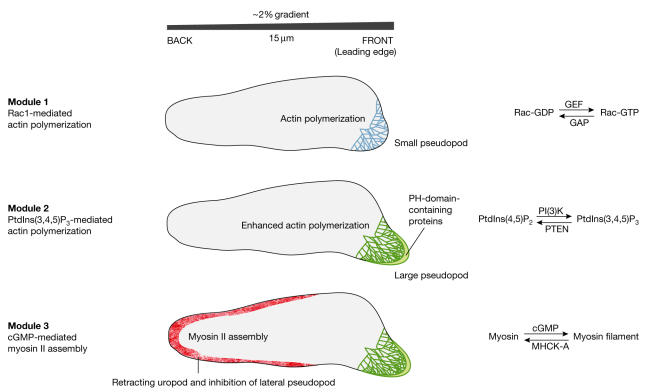Figure 3.
Modules in chemotaxis. The first module provides the formation of active small G proteins of the Rho/Rac group, leading to actin polymerization and a small pseudopod at the front of the cell. It is proposed that the differential spatial activation of stimulatory guanine exchange factors (GEFs) and inhibitory GTPase-activating proteins (GAPs) leads to the accumulation of GTP-bound G protein at the higher chemoattractant concentrations. The polarity induced by the first module is used by the second module to trigger a patch of phosphatidylinositol-3,4,5-trisphosphate (PtdIns(3,4,5)P3) at the leading edge, which enhances actin polymerization and extension of the pseudopod. The third module inhibits the formation of pseudopodia in the back and at the sides of the cell, and induces retraction of the uropod. An increase in cGMP concentration leads to myosin filament formation throughout the cortex, while myosin becomes phosphorylated and is depolymerized in the front of the cell by a specific kinase (myosin heavy-chain kinase A (MHCK-A)) that translocates to the leading edge. Other pathways (PAKa in Dictyostelium and Rho in neutrophils) might also contribute to myosin filament formation.

